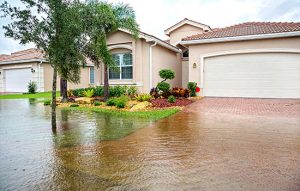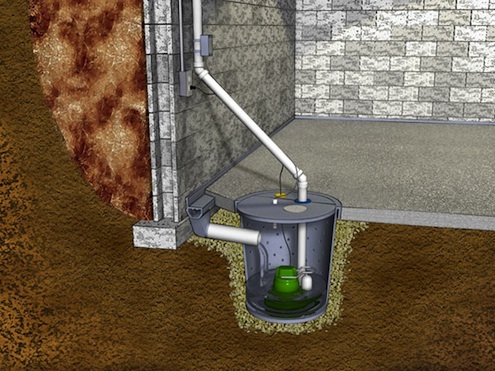Choices that influence your life and that of the people you love are the hardest to make. And, even though it may not seem like it at first, sump pumps have the ability of changing one’s live, as they can be your only helping hand in case of flooding. Their importance goes from protecting one’s home against excessive humidity and limescale to saving hundreds or thousands of dollars as potential flooding damages.
Of course, before you can make a choice, you need to know the basics.

Basic Facts about Sump Pumps
There are two major types of sump pumps: pedestal (above ground) and submersible. Their power usually varies between 1/4 and 1 horsepower.
The pedestal pumps have their motors mounted on a shaft outside the sump basin. The vertical design is meant to allow easy access to the motor and simple adjustment for specific on/off points. These pumps are ideal for sump pits of 10 inches or less. They are economical and are able to operate between 5 and 15 years, but they require positioning in such a way as to avoid the submerging or the motor or getting it wet.
The submersible pumps on the other hand have their motor sealed in it’s case and sunk to the bottom of the sump basin, meaning they are meant to be installed underwater. They are quieter and safer – thus more appropriate for families with children; they are perfect for installment in finished basements and are able to operate up to 25 – 30 years.
Both types of sump pump systems have six major components:
- The sump basin – The sump basin is the pit that stores the water before the pump removes it. There is usually some amount of water in the basin and the pump won’t be triggered to turn on until the water level reaches a certain height.
- The primary pump – This is the main pump that will run to evacuate water out of the basin usually plumbed into PVC pipe that will discharge the water out into your yard.
- The plumbing – The schedule 40 PVC pipe that is connected to your pump and directs the water to it’s exit point outside of your hourse.
- A check valve – that is used to prevent the discharged water from flowing back into the basin. This makes sure that the water pushed up and out does not all fall right back in which would trigger the pump to run again over and over on an continuous loop.
- A backup sump pump – An optional backup sump pump can be used in case your primary pump is not able to function. This could be because the primary pump or plumbing is broken, but more often it’s because the home does not have power to run the main pump.
- A float switch – Which is usually a floating ball that has a metal piece inside of it that will make contact to trigger the primary pump to turn on anytime the water level gets too high.
Aspects to Consider When Choosing a Sump Pump
Backup sump pumps can be powered by batteries or by municipal water pressure. They are connected to the primary pump and they turn on when the main pump fails. It is important to install a light or sound alert system if your backup does not already have one so that you can be alerted in case anything goes wrong with the main pump.
Although sump pumps powered by municipal water pressure are designed to work with limited water quantities, they can make an excellent choice for a small household or one placed in an area where heavy rainfall is not part of the ordinary.
Switch Types
- Capacitive switches measure the water level with the help of a microprocessor and start the pump when the level of the water in the sump basin reaches a predetermined point. The good thing about them is that they have no mechanical parts that could wear out.
- Vertical switches are devices that travel vertically in the sump basin and turn the pump on when the water reaches a certain level. They are mechanical and they cannot be adjusted. It is very important that the switch be installed in a 90 degrees angle with the incoming liquid.
- Diaphragm switches turn the pump on and off based on the water pressure levels.
Pump Material
Since sump pumps are used in moist environments and even under water (submersible), it is very important that their parts be made of corrosion and water proof materials, such as stainless steel, bronze, or epoxy-coated cast irons, sometimes even thermoplastics can get the job done. This way you can be sure that your pump will be safe and ready to use for years to come.
Pump Capacity
You will find it measured in gallons/minute or gallons/hour. Keep in mind the height to which water should be lifted for removal, also known as head pressure and make sure the pump you buy has the power to lift water to that level. The general minimum lift is 10′.

Producer/Manufacturer
Sump pumps are devices you buy for long term use. Their price is not exactly affordable and, should anything go wrong, it is very important that you find spare parts, repair services or someone to turn to for warranty.
Besides, you know that this market niche, just like all the others, is stuffed with low quality products built on ships or third world illegal factories and sold under fake labels. It is therefore important to make sure you know who you are working with. Customer reviews can prove quite helpful in this regard, so read a few before deciding on a specific model.
Installation
Most sump pumps can be installed by the owner, requiring no special tools or skills. Click here to read tips on how to fit a sump pump. To make sure you succeed, read the installation guide before you begin and keep it somewhere close, just in case you need further instructions. Make sure your existing wiring is enough to support the pump or ask for an electrician’s advice if improvements are required.
Turn power off whenever you are working on your sump pump, whether for installation of repairs. Don’t use an extension cord. Have your sump pump installed on an outlet that is GFCI protected. Get information about local code water discharge regulations, to avoid any fines or later penalties.
Word of advice When looking for the best sump pump, make sure it complies with SSPMA (Sump and Sewage Pump Manufacturers Association) standards.
All in all, the choice should not be that hard. Don’t rush into buying anything, ask any questions that cross your mind and compare. It will be a little difficult at first, but there is no doubt that, after reviewing a couple of models, you’ll get the hand of it.
And remember that the online market can be full of surprises. Online retailers are not paying rent or sales personnel and they often organize sales promotions, giving significant discounts or benefits, so you should be able to find some incredible offers.
We find it is best to research real user sump pump reviews, as well as keep your eyes open and trust your instincts, and you will certainly find the best sump pump out there!


